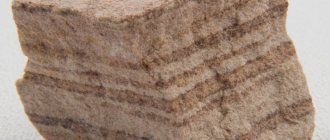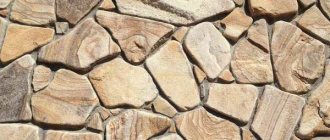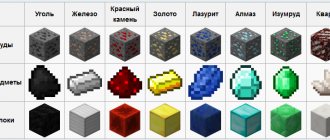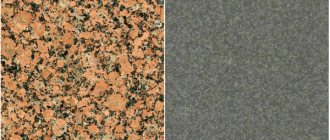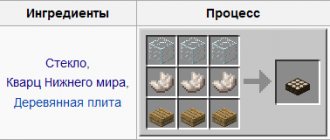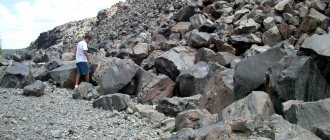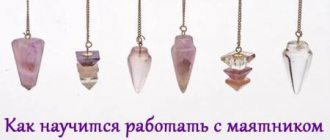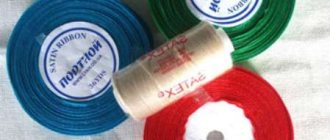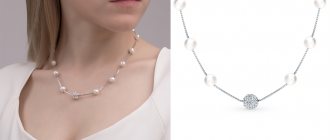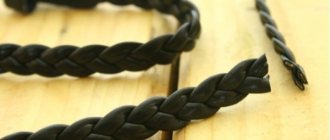How to make carved sandstone in Minecraft?
To contents
To create carved sandstone, which also has an attractive and very interesting texture, you will need four blocks of the smooth variety of material. The recipe is similar to the previous ones. We place four blocks of smooth sandstone on the workbench, and they turn into a carved part. As we can see, there is nothing complicated in the processes described above.
Now you know how to make carved sandstone in Minecraft. We advise you to find a large amount of sand, you will actually need a lot of blocks. Do not confuse it with other materials. The sand in this game is always ivory-colored, and there are a lot of materials with similar textures. Pebbles and other blocks. You just need sand, a few stacks, then you can start building a sandstone building.
Where can I get a stone in Minecraft?
To make stone in Minecraft, you need to melt cobblestones in a furnace. In addition, the stone can be immediately mined with a pickaxe enchanted with Silk Touch.
Interesting materials:
How many grams are in 1 Snickers bar? How many grams are in 1 Posidelkino cookie? How many grams are in Chicken Shawarma? How many grams are in one Mars? How many grams are in one medium apple? How many grams are in Alenka chocolate? How many grams are in a tablespoon of salt, sugar and vinegar? How many grams of yolk are in an egg? How many grams of applesauce are in a tablespoon? How many grams of starch are in one teaspoon?
Minecraft building blocks: how to make and use
Smooth red sandstone in Minecraft is also called: Red smooth sandstone.
Smooth red sandstone in Minecraft is a hard artificial block, on the texture of which, by the way, the number “two” can be seen if you look closely. What would that mean? It must be said that there are several varieties of sandstone: sandstone - smooth sandstone - decorative sandstone. The variants of the red analogue are distinguished in the same way. Smooth red sandstone would be good to use for creating buildings. But how to do it?
Mining and stone processing
The main deposits were found in the steppe and mountainous zones of Russia, Kazakhstan, Ukraine, Dagestan, Poland, and Bulgaria. The Donbass field is considered the largest in Europe. Lugansk and Donetsk sandstone is formed from spar and quartz. The color is gray-green, beige, brown, dark gray, yellow.
Crimean savage – gray-green. Mined in mountainous areas. Used for millstones, grinding wheels, sidewalks, plinth cladding.
In Ukraine there are also deposits of decorative sandstones:
- Ternopil (fine-grained gray-red, gray, scarlet stones);
- Yampolskoe (light gray and white savages).
Dagestan sandstone has warm shades of white, beige, gray or red. They are mined near the villages of Akusha and Chiri. Suitable for the construction of walls, garden decoration, interior design.
In Russia sandstone is mined:
- in Kemerovo, Rostov, Moscow regions;
- in the Volga region;
- Ural;
- Far East.
Chelyabinsk region famous for the Karabash deposit of mica and quartz flagstone. It produces golden, silver, gray, green, and brown types of stone. The remaining deposits contain black, gray, and beige sandstone.
Methods of extraction and processing:
- siliceous and quartz rocks are blasted, blocks are sawed into slabs (slabs);
- Clay or calcareous layers are chopped off and removed from the soil with buckets.
In production, sandstone is cleaned and cut into standard size stones. Then the savage is ground to remove burrs and polished (the treatment is called tumbling). The pattern and texture are emphasized with impregnation or matte varnish.
View this post on Instagram
Publication from DAGESTAN STONE Peter (@dagestkamen) July 19, 2019 at 4:01 PDT
Video about stone mining:
Areas of use of the breed
The use of sandstone as rubble stone and decorative cobblestones has long been an integral part of landscape design, when creating rock gardens, fountains, and cascades.
Sand stone is durable. An example of its ancient use is the tallest minaret, the Qutub Minar, built in 1368 near Delhi. In St. Petersburg in 1903, a two-story private house by A.F. Kelkh was built, facing the street. Tchaikovsky.
Sandstone products come in a wide range of colors and shades, allowing you to recreate exquisite products in stone. Sculptures, panels, bas-reliefs made from the material complement architectural compositions, and the wide color spectrum of the material evokes positive emotions.
Red sandstone (Old Red Sandstone) belongs to sedimentary formations of the Devonian period. Its formation occurred as a result of the destruction of mountains. The breed is mainly found in the British Isles. The remains of armored fish are often found in sediments.
Red sandstone is often used as a material for sculptures. Alleys in city parks are often decorated with products made from the rock in rich crimson and gray colors.
The porous structure of sandstone and high permeability make the rock an excellent reservoir for hydrocarbons (oil, gas). Cuprous sandstones are closely associated with large copper deposits.
Quartz sandstone, containing more than 95% silicate compound (quartz), is used in industrial production as a flux in the smelting of non-ferrous metals (nickel, copper).
Quartz sand is a raw material for the glass industry. The main glass production is concentrated near quartz quarries.
The properties of sandstone depend on the mineral composition of the rock, which may contain magnetite, ilmenite, rutile, zircon, and tourmaline. The composition of the cementitious substance can be clayey, calcareous, siliceous, ferruginous, phosphate, and sometimes zeolite.
The savage stone is distinguished by its natural layering. It does not require additional processing on special machines. It is used for finishing facades and fences. The natural relief of the material allows you to create excellent surface designs.
Sandstone composition
The composition of sandstone is most often dominated by quartz. Associated minerals are feldspars, mica, glauconite.
Stone is classified according to the minerals it contains. There are the following types of sandstones:
- Monomineral (consist of one mineral): quartz, glauconite.
- Oligomictic (consist of two minerals): mica-quartz, feldspathic-quartz.
- Polymictic (consist of three or more minerals): arkose, greywacke.
When determining the type of sandstone, the composition of the cement is important. Carbonate rocks are considered the highest quality, and clayey rocks the least. Sand grains are also cemented with phosphates, gypsum, iron oxides, chalcedony, and chlorite.
Fossils are often found in the structure of the stone: ancient shells and impressions of fossil animals. This shell sandstone is in great demand in interior design and landscape design.
How to make smooth sandstone in Minecraft?
To contents
Another very beautiful element that can be crafted only thanks to the presence of ordinary sandstone. Many players find it more attractive than the standard material. Well, it's a matter of taste. But it’s nice that the developers are introducing such variety. Although the material itself did not appear immediately, but only with update 1.5. Smooth sandstone has several main advantages:
- It is easy to craft, you only need four simple sandstones.
- He looks very interesting.
- It will allow you to dilute the design of houses in Arabic and similar styles.
The only disadvantage of the material is its weak explosion resistance; a creeper can easily destroy half a house with one explosion. Be careful and don't let these monsters near your home made of this material. So how to make a smooth sandpaper in Minecraft?
As you can see in the picture above, we only need four blocks of regular sandstone, as well as a workbench. Place them in the indicated manner and you're done. The advantage is that we craft four blocks of smooth sandstone at once. That is, there is no loss of material.
Types of sandstones by color:
Sandstones have amazing, unique colors. They owe this to the various impurities that make up the stones. Color also depends on the concentration of these impurities, giving sandstones a more delicate or, conversely, more intense color.
- Red sandstone has a rich color and special qualities that make it stand out from the mass of other sandstones. It has increased strength and resistance to temperature changes and exposure to sunlight. Red sandstone is highly valued in construction. It is used for cladding facades, for the construction of swimming pools, fountains and the creation of decorative elements for the garden;
- Pink sandstone – has a heterogeneous color. It is characterized by high strength and can withstand high loads. Pink sandstone is often used for interior decoration and to create decorative products;
- White sandstone – has a delicate color with individual colored inclusions. White sandstone is very popular. It is used for the manufacture of columns, sculptural compositions, and decorative finishing of facades. To protect against external influences and to preserve color, white sandstone must be treated with a special compound during construction;
- Yellow sandstone – has a yellowish-beige color. This type of sandstone is characterized by high fragility and a rough surface. It cannot be sanded. Yellow sandstone is not used where the product will not be subject to stress.
- Gray or gray-green sandstone - characterized by a fine-grained structure, has increased stability and fire resistance. Gray sandstone gives the room an outdated look and is used for interior decoration.
- Tiger sandstone has a heterogeneous coloring, in which stripes and spots are clearly visible. For such an original color, as well as for its high resistance to loads and external influences, sandstone is widely used in the construction industry;
- Flagstone is sandstone with a dense structure, high stability and increased strength. The color of the flagstone resembles a cut of a tree with growth rings and traces of knots.
Volcanic and calcareous tuffs
- Volcanic tuff is a type of sandstone that was formed due to the solidification of volcanic masses. This sandstone has a porous structure. Today, a large deposit of volcanic tuff is being developed in Armenia. This tuff has the following characteristics: compressive strength – from 40 to 200 kg/cm2, hardness – 2-3 on the Mohs scale. This type of tuff has a high heat capacity, so it is often used for the construction of house walls. The material does not tolerate polishing. Volcanic tuff was used for finishing walls at the Paveletskaya metro station in Moscow, for cladding the buildings of the Dnieper Hydroelectric Power Station, and for cladding many buildings in Moscow and Armenia.
- Calcareous tuffs are a product of calcium precipitation from mineral rocks. It has a porous structure. With a uniform and structured arrangement of pores, calcareous tuffs are called travertines. Travertines are most often light, light gray or white in color. The compressive strength of travertine is 300-900 kg/cm2. Travertines are used for wall cladding both outside and inside buildings.
Properties of sandstone
The stone is resistant to low temperatures, relatively strong and durable. Natural sandstone successfully replaces softer shell rock and at the same time costs less than dense and heavy granite. Main physical characteristics:
- Density – 2250-2670 kg/m³. Less granite, more shell rock.
- Water absorption is low (0.63-1.57%). The stone practically does not absorb moisture and is therefore frost-resistant (withstands up to 50 freezing/thawing cycles).
- Fire resistance – high. Quartzite sandstones do not lose their properties at temperatures of 1700-1770°C. Rocks with high amounts of silica are used in the production of silica refractory materials for industrial furnaces.
- Porosity is high. Sandstone deposits often contain significant quantities of oil and gas.
- Abrasion is average. The stone is relevant for arranging low-traffic sidewalks and interior floor coverings.
It is worth considering that despite the good indicators of water absorption, frost resistance and abrasion, sandstone is relevant as a street finishing only in the absence of sub-zero temperatures. For example, in the climatic conditions of St. Petersburg, we strongly do not recommend using this stone outdoors.
Sandstone mining
The stone is ubiquitous throughout the world. In Russia, sandstone deposits are concentrated in the Urals, Siberia, Kemerovo and Rostov regions. There are large deposits in Dagestan. In Europe, the stone is mined in Bulgaria, Poland, and Ukraine. The main deposits are located where there were large bodies of water in previous geological eras.
The following methods are used to extract stone:
- Drilling and blasting. Shafts are drilled into the rock into which explosives are placed. The method is relevant for the extraction of quartz and siliceous rocks.
- Stone-cutting. The rock is cut into blocks using special cables.
- Air cushion method. Holes are drilled into the formation into which air is pumped under pressure.
The resulting blocks are sawed and sent to the factory, where they are cut into standard blocks (slabs), ground and polished. To obtain a brighter pattern, the surface of the stone is treated with a special impregnation.
What is sandstone
It is a sedimentary rock found in the superficial part of the earth's crust. The main method of formation is the destruction and transport of rocks by water, followed by cementation of sediments. It is essentially sand cemented naturally under water pressure. The color scheme is dominated by light shades: yellow, beige, red, amber (less often, gray-green, golden, blue). The structure of the stone depends on the deposit, the composition of the fragments, and the type of cement:
- Fine-grained – 0.1-0.5 mm.
- Medium grain – 0.5-1 mm.
- Coarse-grained – 1-2 mm.
Based on the size of the layers, a distinction is made between flat stone (splits into thin, uneven plates) and flagstone - more durable, with a smooth surface and a ring-shaped pattern.
